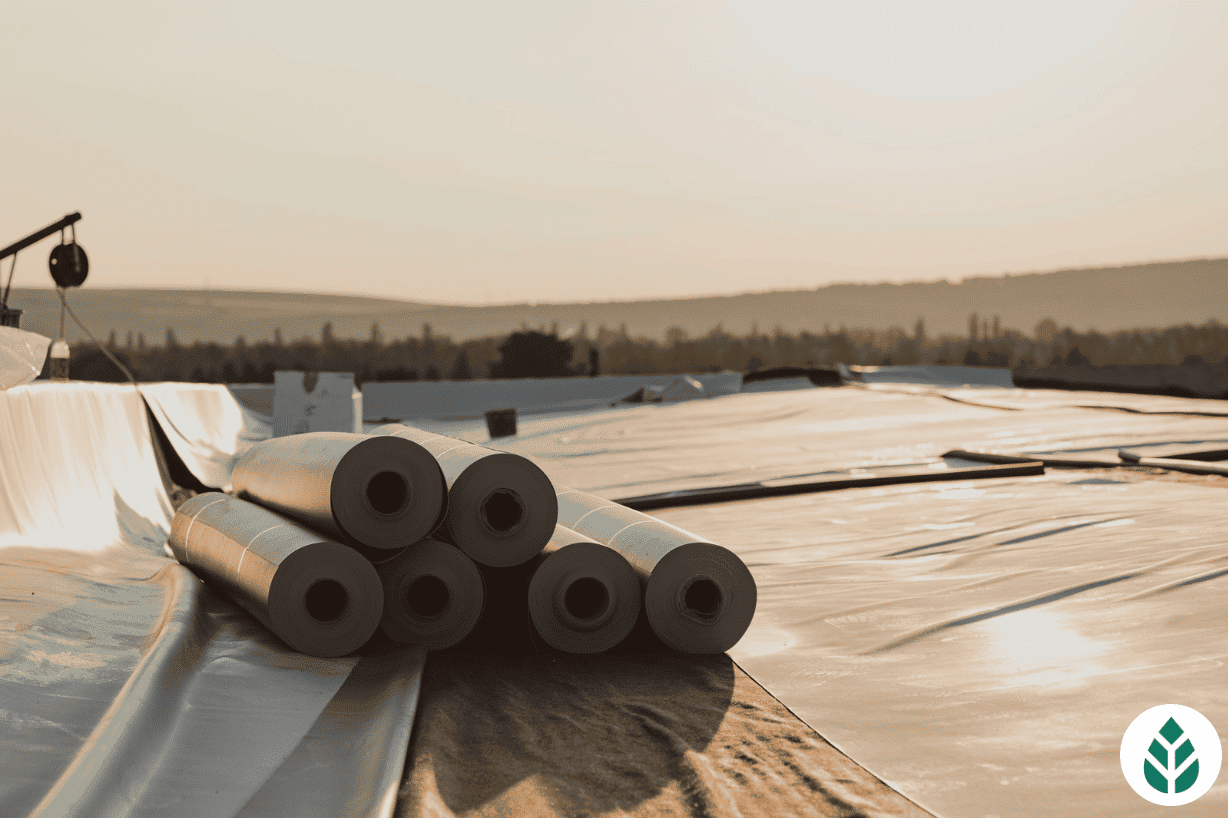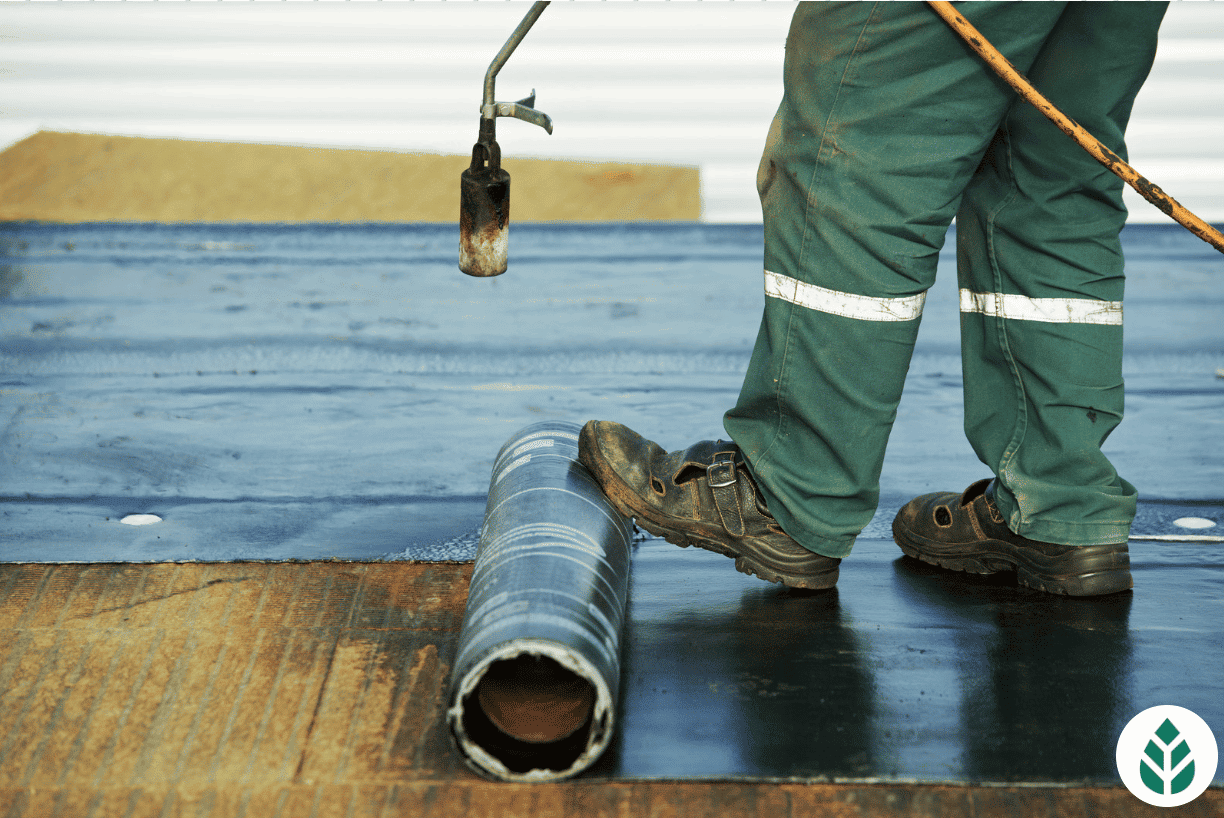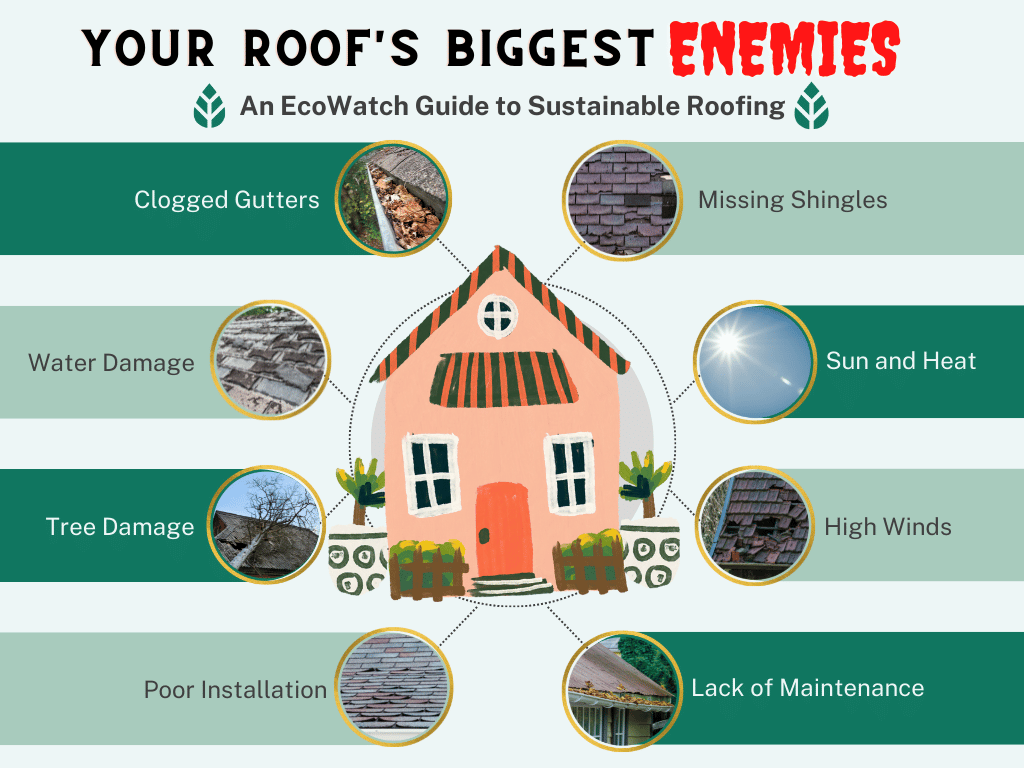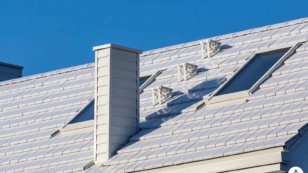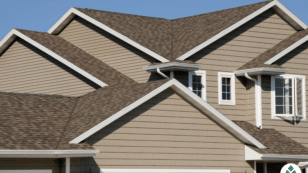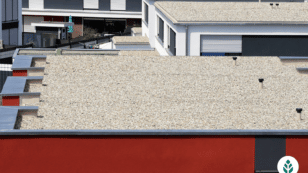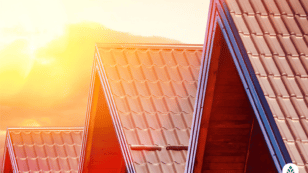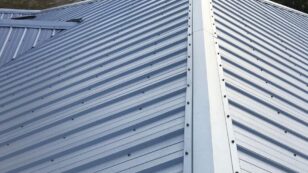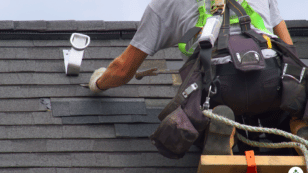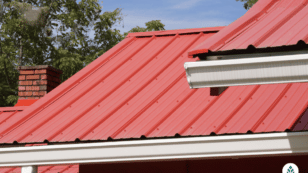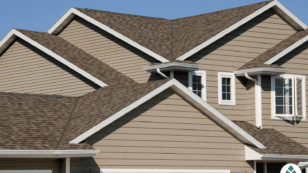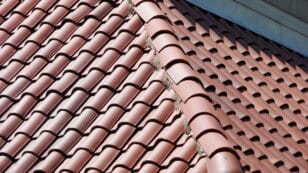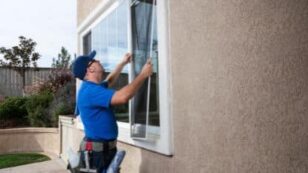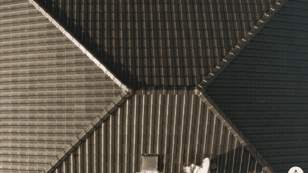
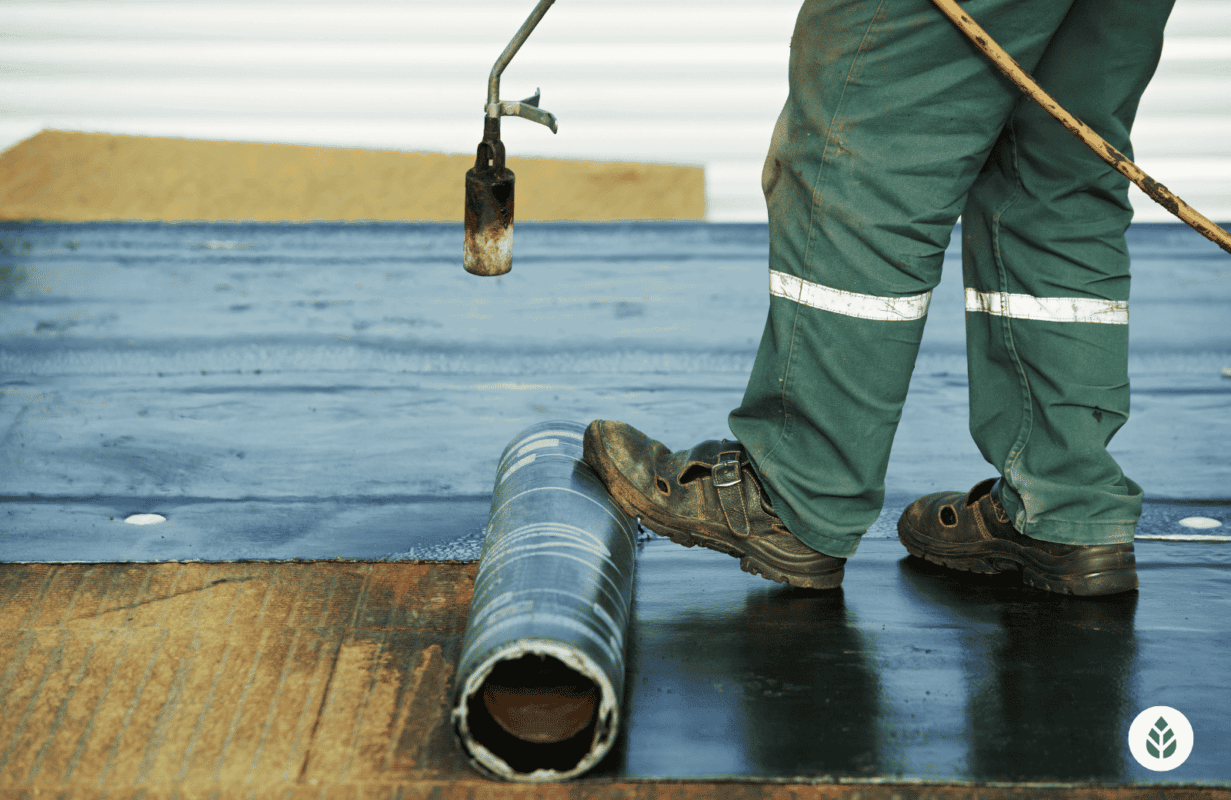
Rolled Roofing: Usefulness, Costs & Installation Information (2024 Guide)
In this complete guide to rolled roofing, we’ll discuss:
- What is rolled roofing?
- What types of rolled roofing are there?
- When should rolled roofing be used?
- What are the pros and cons of rolled roofing?
Each product and or company featured here has been independently selected by the writer. You can learn more about our review methodology here. If you make a purchase using the links included, we may earn commission.
When it comes to roofing styles, one of the least common types of residential roofing is rolled roofing, also called mineral surface rolled roofing or MSR. Despite its lack of popularity and prevalence in the residential realm, rolled roofing is a staple of commercial building and is used less often for flat roofs on more modern homes.
In this complete guide to rolled roofing, we’ll discuss what it is, what types are available, how well it works, and what it costs. We’ll also explain how to install it, or determine if you need to go with a pro, and how to determine if it’s the right kind of roof for your home.
What Is Rolled Roofing?
Rolled roofing is exactly what it sounds like: it’s a roofing material that comes in large rolls that you roll out over your roof and adhere to the roof sheathing. The material can usually stick to fiberglass, wood, roofing felt and any waterproofing underlayment or base sheet you might be using.
Unlike roof shingles, which get laid down one by one, rolled roofing is quick to install in large strips, and it’s significantly cheaper than most other styles of roofing.
The rolls can be made of a variety of materials but usually contain rubber, polymers or asphalt. As such, they aren’t the most environmentally friendly stuff.
How Effective Is Rolled Roofing?
Rolled roofing can be quite effective for protecting your home or building from water intrusion, and some types of rolled roofing can also protect against UV damage from sun exposure. Rolled roofing is often used on flat roofs, where the risk of water pooling is greatest, which should speak to its efficacy.
Unfortunately, rolled roofing doesn’t last nearly as long as asphalt shingle roofs, slate roofs, wood roofs, or just about any other type of roof. The average lifespan of a rolled roof is five to eight years, as compared to the typical 20 years you’d expect from an asphalt shingle roof.

Power Home

Average cost
Pros
- Positive industry reputation
- Lifetime or lengthy warranty
- 10+ years of experience
- Positive customer reviews
- Uses eco-friendly materials
- Well-trained, certified installers
- Variety of roofing styles available
Cons
- Limited variety of roofing materials
- Short or nonexistent warranty
- No financing information available
- Expensive
- Little information available on company website

Erie Home
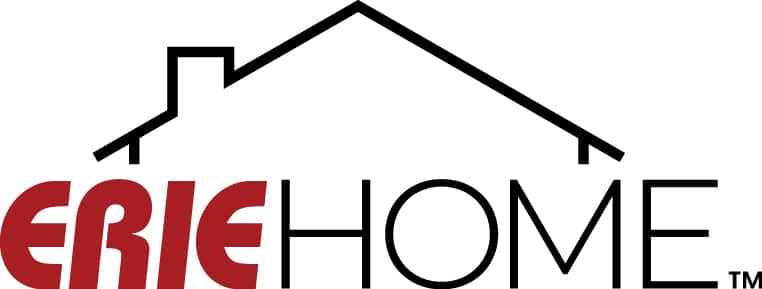
Zero Down - 18 months same as cash with minimum monthly payment
Average cost
Pros
- Lifetime or lengthy warranty
- Widespread availability
- 10+ years of experience
- Positive customer reviews
- Uses eco-friendly materials
- Financing options available
- Well-trained, certified installers
- Uses durable materials meant to last
- Variety of roofing styles available
Cons
- Limited variety of roofing materials
- Expensive

Aspen Contracting

Average cost
Pros
- Positive industry reputation
- Lifetime or lengthy warranty
- Widespread availability
- 10+ years of experience
- Positive customer reviews
- Financing options available
Cons
- Little information available on company website
Installing Rolled Roofing
The installation process for rolled roofing depends on the type of roof material you’re working with. In most cases, you’ll lay down roofing cement as an adhesive and then roll out the rolled roof material over the cement, cutting it to shape and size as you apply strips.
Many homeowners use roofing nails to secure the rolled roofing material even further. Roofing cement can then be used to seal overlaps between the rolled roofing strips as well as any areas where nails punctured the material.
Most handy DIYers can get a full rolled roof installed in an afternoon, while an asphalt shingle roof can take days to install. This is one of the major upsides to installing rolled roofing, along with the below-average cost.
To learn more about a DIY rolled roofing installation, check out this video:
What Does Rolled Roofing Cost to Install?
The cost of your rolled roofing project can vary quite a bit based on several factors. These include:
- Labor costs, as a DIY roof replacement can save you several thousands of dollars on labor
- The type of rolled roofing you’re installing
- The size and slope of your roof
- And more
Generally speaking, you can apply rolled roofing to a typical 1,200-square-foot roof for around $1,500, on average, and most prices will fall between $1,200 and $1,750. This includes the materials and tools needed for a proper installation.
If you’re having a roofing contractor install a rolled roof for you, you’ll likely be looking at prices between $2,500 and $4,800. Todd Miller², roofing installer for more than 30 years and President of Isaiah Industries, adds, “If you have more than one layer of existing shingles, removal is necessary,” which can add to the total cost of your project.
Types of Rolled Roofing
There are a few different types of rolled roofing, all varying in their durability and efficiency. We’ll briefly explain the different types of rolled roofing below.
Rubber Rolled Roofing
Rubber rolled roofing is the most cost-effective type, and it’s also the most common. You can typically pick up this type of roofing in Home Depot, Lowe’s and other home improvement stores.
Rubber roofing is made out of recycled tires and a mixture of other materials. Durability is decent, and the cost is lower than that of all other rolled roofing materials.
EPDM Rolled Roofing
EPDM (ethylene propylene diene monomer) rubber is another common rolled roofing material. This rubber is also made from recycled materials, and it’s made to be thinner and more lightweight than traditional rubber roofing.
EPDM roofing is highly resistant to heat and UV rays, so it’s more durable than rubber rolled roofing. It also lasts significantly longer — usually around 20 years — but it’s also much more expensive.
Bitumen Rolled Roofing
Bitumen rolled roofing — also called modified bitumen roofing — is made from bitumen, as you might have guessed. Bitumen is another name for asphalt, so this is the same material that goes into making roads and driveways. It’s relatively easy to install, as it typically comes in self-adhesive sheets.
Bitumen rolled roofing is more costly than most other types, but it also lasts for around 20 years on average.
TPO Rolled Roofing
TPO (thermoplastic polyolefin) roofing is made out of polypropylene and ethylene propylene, which typically come from recycled tires. These sheets are highly durable, lasting 20 years or more in most cases.
When you see flat roofs on commercial buildings, TPO rolled roofing is likely what was used. This material is highly resistant to leaking, but it’s more challenging to put down, as it requires the use of a large blow torch.
When Is Rolled Roofing Ideal?
Rolled roofing is most often used on flat or low-pitch roofs, as asphalt shingles that are layered and free-moving don’t offer any protection from roof leaks in these cases.
That being said, rolled roofing is sometimes used by homeowners who prefer to handle their own home improvements, even if it means using rolled roofing on standard pitched roofs.
Rolled roofing is ideal for DIYers, including those without any roofing experience. Even newcomers to roofing can lay down a durable rolled roof in just a day or two with some preparation and instructions.
Rolled roofing is also a common option for outbuildings that are less valuable than primary residences. It’s not uncommon to see this roofing material on sheds or pavilions.
Finally, rolled roofing is perfect for homeowners who need a new roof but don’t want to spend the thousands or tens of thousands the more traditional asphalt roofs or metal roofs would cost them. Rolled roofs won’t last as long, but they’re also far less expensive. You can usually save money in the long run using rolled roofing, even though you’ll need to replace it more often.
Pros and Cons of Rolled Roofing
As is the case with any roofing style, there are some upsides and downsides to using rolled roofing on your home or outbuilding. Some of the more significant benefits of rolled roofing include:
Benefits of Rolled Roofs
- Affordability: Installing rolled roofing is often less than half the cost of installing an asphalt shingle roof
- Ease of installation: Rolled roofing is simple to install as a DIY roofing installation project. It’s easy to cut for eaves and ridges, and many options are peel and stick that don’t require any additional tools. Even if you have a professional install it, you’ll likely pay less per square foot for the installation than you would with any other roofing material
- Ideal for flat roofs: Flat roofs and low-slope roofs often aren’t a good place to install roofing shingles because water can make its way under the individual pieces. Rolled roofing provides a much better solution for these roof types
- Easily transported: Transporting rolls of rolled roofing is easy, as each roll weighs about 75 to 100 pounds. You can pick up materials from your local home improvement store using your own car, and it’s relatively easy to carry rolls up to your roof for installation. Asphalt shingles are far heavier and usually need to be delivered and lifted up to your roof using heavy machinery.
Downsides of Rolled Roofs
Of course, there are some downsides to using rolled roofing as well, as it’s far from the best roofing style. Some drawbacks of rolled roofing include:
- Limited durability: Some rolled roofing materials — like EPDM rolls — can last up to 20 years, but the low-cost options last around five to 10 years on average. The lifespan pales in comparison to what you’d expect from asphalt roofs, slate roofs and most other styles.
- Limited warranty: Due to the fact that it’s less durable than other roofing types, the warranty is usually less appealing.
- Wears away quickly: Rolled roofing is quite thin and can tear or wear away more rapidly than thicker asphalt shingles. You might need multiple layers of rolled roofing on your home to provide adequate protection, which can drive up your installation price and potentially put your home at risk of damage sooner after installation.
- Offers less curb appeal than other styles: Most homeowners agree that, unless rolled roofing is installed on a flat roof that isn’t visible from the ground, it’s far less aesthetically pleasing than any other roof material.
- Adds less value to your home: Since rolled roofing is less visually appealing than other materials and has a shorter lifespan, installing a new roof in this material won’t add as much value to your home as other materials. Additionally, some buyers might be turned off by rolled roofing altogether.
- Not ideal for solar panel installation: For homeowners looking to install solar panels, avoiding rolled roofing is best. This material only lasts five to eight years in most cases, and removing your panels to replace your roof and reinstall the photovoltaic equipment in this timeframe will get expensive very quickly.
Some homeowners may sacrifice durability to cut down on costs, but industry experts, such as Steve Elliot¹, Franchise Owner of Restoration 1 Minnetonka, warns against this cost-saving tactic:
“One of the most important factors to consider is durability. Look into the type of climate in your area and assess the qualities of the roofing material to understand its resistance, as well as its projected longevity. Also ensure good installation and proper maintenance for your roofing to last a long time.”
FAQ: Rolled Roofing
Rolled roofing certainly has its place in the roofing industry. However, the most common type of rolled roofing — rubber rolled roofing — has low durability and a limited lifespan. It needs to be replaced more often than just about any other roofing material.
However, rolled roofing is super easy to install, making it ideal for DIYers, and it’s the most affordable roof style available.
The answer to this question depends on what you’re looking to get out of your new roof and the type of roof you have.
If you’re looking to prioritize affordability and ease of installation over durability and lifespan, then a rolled roof might be ideal for you. If you’re looking for longevity and curb appeal and don’t mind paying more for them, then an asphalt roof will usually suit you much better.
Additionally, if you have a flat roof or a low-slope roof that’s mostly flat, asphalt shingles can lead to severe roof leaks. In these cases, a rolled roofing system is the preferred choice.
Rubber rolled roofing usually lasts between five and eight years, which is less than half the lifespan you could expect from an asphalt roof. Other types of rolled roofing — including EPDM, bitumen and TPO — can last up to 20 years with proper installation.
Rolled roofing is usually used on flat roofs and roofs with minimal slope, as it’s better for protecting against leaks than individual shingles that aren’t glued down. Rolled roofing is also a common option for re-roofing sheds and other outbuildings that don’t need the same kind of protection your main home does. It can also be a good option for roof repair on porches, pavilions, and other roofed structures.

 233k
233k  41k
41k  Subscribe
Subscribe 
